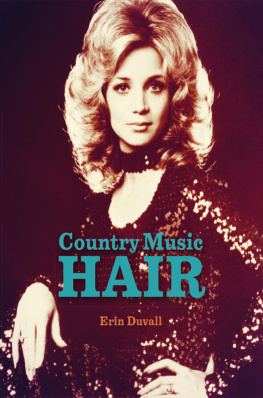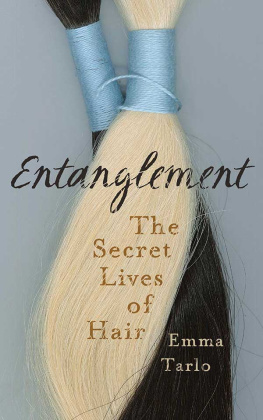
Dolly Parton, courtesy of The Estate of David Gahr/Getty Images
Contents
- THE 1960s:
The Bakersfield Sound and Bouffant Hair - THE 1970s:
Outlaws vs. Rhinestone Cowboys - THE 1980s:
The Bigger the Hair the Closer to God - THE 1990s:
Mullets and Meltdowns - THE 2000s:
Layered and Frosted - THE 2010s:
Modern Men and Women
Guide

Johnny Cash, courtesy of Michael Ochs Archives/Getty Images
Style and culture have always gone hand in hand, and country music has celebrated iconic style moments through the decades with the best of them. Fashion evolves, just as musical taste does, and hairstyles seem to pinpoint the trends of the season of music more than anything. I most certainly associate musical moments with the styling of the artistwhether it was the vision of Dolly Partons sky-high platinum curls as she sashayed across the stage in a power-ballad with Porter Wagoner, or how Billy Ray Cyrus rocked America with some countrified-sass in the 90s with an Achy Breaky Heart and a mullet.
Hair is a creative self-expression in itself. Just as artists captivate with melody, their personal styling expresses their passion and vision to their fans. Who would Willie Nelson be without his iconic braids? Would Taylor Swift have launched into the musical stratosphere without the sweetness of her soft curls matched with the innocent teenaged-longing of Tim McGraw?
This journey through decades of country music and the evolution of personal expression through style and hair explores the relationship we all have with our favorite country artists, their iconic music moments, and the personal style that marked their reign over the charts.
Cassie Kelley

Patsy Cline, courtesy of Grand Ole Opry, LLC
C ountry music is a lifestyle. Its rare to find a casual fan of the genre that gave us such cultural icons as Dolly Parton, Willie Nelson, and Reba McEntire. It all starts and ends with the music, but once country fans find an artist who speaks to them, who sings the words they cant find themselves, an incredible bond is formed. Theres a loyalty and an allegiance created between artist and fan that allows singers to have long and lasting careers.
Songwriter and producer Harlan Howard, who cowrote I Fall to Pieces for Patsy Cline, famously broke down country music to its essence, stating that it is made up of three chords and the truth. From the Carter Family to Blake Shelton, this theme can be found. The melodies are simple and easy to sing along with, and the stories strike at the soul.
In the 1920s, the Carter Family, who would later give us June Carter Cash, began performances across the nation of what we would today call country music. The songs they made famous could be easily rendered at the kitchen sink or at a Saturday evening gathering by a singer of any skill level.
But prior to the 50s, the term country music didnt exist. Folk music is the original country music. The themes and the tales are those of the common man. Ernest Tubb is known for coining the phrase country music after he himself was referred to as a hillbilly musician. He chose the label, it is said, because thats where the majority of the people who play this type of music come from: the country. And the word seemed less derogatory than hillbilly. In any case, country found its way into the citiesfirst on the airwaves of WSM AM during performances of The Grand Ole Opry, and later on the glass of Farnsworths invention.
In the 60s, country singers were afforded an invitation into every home in America. From Hee Haw to The Johnny Cash Show, variety shows brought these iconic voices into the living rooms of those who loved their lyrics, increasing the intimacy of the fan experience. At the same time, it created increased pressure on the stars of the day: they could no longer be anonymous voices on the radio; they now had to become superstars.
With more eyes on them, country singers rose to the challenge, embracing their images. That isnt to say that style wasnt a consideration before this time. But the increased exposure that television brought amplified this need. Theres a huge difference between singing in front of hundreds of people at a festival and thousands or millions on the small screen. Since the 60s, artists have evolved their hairstyles and fashion along with their music as they have grown in stature and career ambitions. Numerous icons from the genre have paved a path using their unique hairstyles and looks to advance their careers and lives.
The focus on looks, while seeming somewhat superfluous and shallow in a business that should be driven by talent, has helped build careers. This added element has drawn fans in and created another level of intimacy between them and their favorite singers. Hairstyles are emulated and lusted after. Haircuts are publicly mourned or celebrated. An artists image is almostalmostas important as his or her music.
There are no requirements. No one has to look a certain way. They simply have to represent themselves. Country singers come in many varieties. From mullets to mustaches or teased hair to bobs, country singers have their own distinct looks. Some wear hats and others wear wigs. Some follow the trends and others set them. Some have stylists tour with them to ensure a perfect do for every show, while others are confident with their own hair-spraying abilities.
Over the past sixty years, country singers have become movie stars like entertainment mogul Dolly Parton, helmed their own sitcoms like Reba McEntire, and created a legion of loyal lifestyle fans like Willie Nelson. Theyve crossed genre lines and inspired popular culture with their music and their looksall while their fans cheered, purchased their merchandise, and followed their lead. They have built lasting relationships with the masses while perfecting their craft and influencing generations.
To this day fans still adamantly express their opinions when stars make a significant alternation to their look, the same way they respond when a sound or musical style is altered. You cant separate Dolly Parton from her over-the-top dos. Would Reba McEntire be Reba without her signature red hair? Willie Nelson will forever be the Red Headed Stranger. Hair is tied to the music and the music is tied to the hair.
T he 1960s were a decade of change and tragedy. It was the era of Elvis Presley and the British Invasion. People were doing The Twist along with Chubby Checker and (Sittin on) the Dock of the Bay with Otis Redding. Womens lib was on its way in as the idyllic families of the 50s struggled to keep hold. Society was evolving, and so was the music being created. The changes in the world directly affected a generation of listeners as well as artists.
The hairstyles of both men and women made drastic leaps over the course of the decade. Prim and proper was the way of the 50s, and wild and free would be prevalent in the 70s. Nashville was no different as it was broadcast to homes across the United States. As the music became mainstream so did the styles of those who were churning out the hits.















